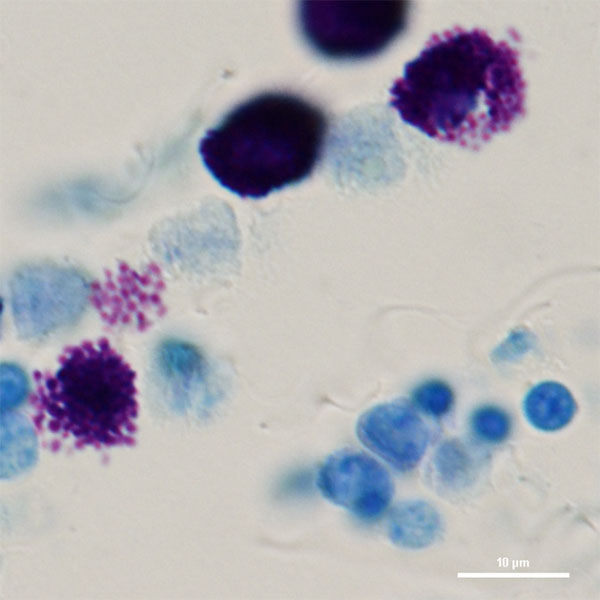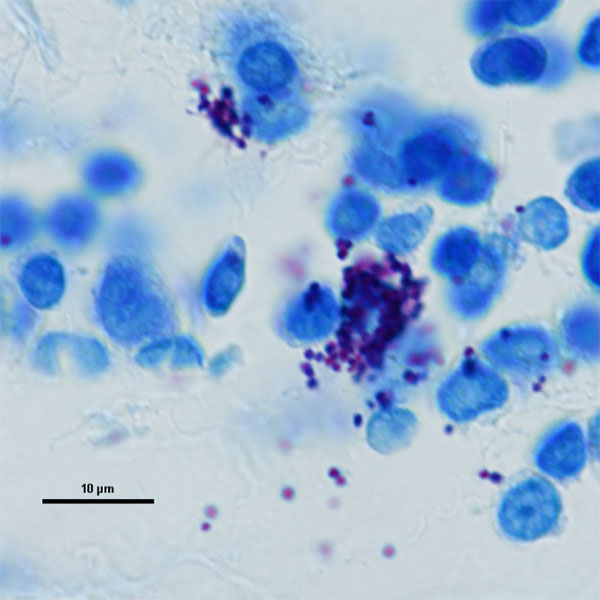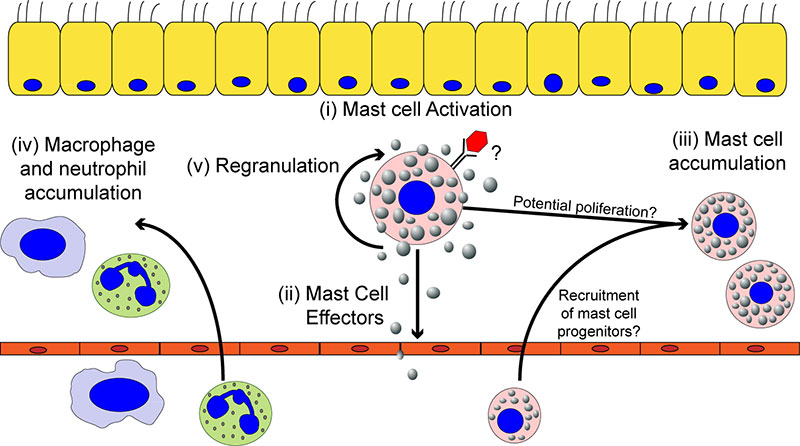Role of Pulmonary Mast Cells in Influenza Virus Pathology
Influenza A virus (IAV) is a major cause of seasonal viral respiratory infections. Not only do IAV-induced illnesses have a significant economic impact, but there are also ~36,000 deaths and ~1.7 million hospitalizations each year in the United States alone. Moreover, IAV has the potential to cause global pandemics, which have significantly greater morbidity and mortality. Morbidity and mortality associated with IAV infections is thought be the result of significant immunopathology. It is well defined that IAV strains vary in the severity of lung disease they induce. Thus, the long-term goal of our laboratory is to understand the fine balance between protection and host damage caused by immune responses to IAV infection.

 Lung histology stained with Toluidine Blue to identify mast cells (purple granules) identifying intact mast cells (left) or a degranulating mast cell (right) during IAV infection.
Lung histology stained with Toluidine Blue to identify mast cells (purple granules) identifying intact mast cells (left) or a degranulating mast cell (right) during IAV infection.
Our data demonstrate that mast cells are critical for initiating the inflammatory immunopathology induced by influenza virus in a virus strain-specific manner. Thus the goal of is project is to elucidate the molecular mechanisms responsible for mast cell activation, recruitment, and activity during IAV infection. Importantly, we hope to elucidate the factor(s) which mast cells produce that drives pathological lung damage and systemic disease in hopes of discovering novel therapeutic targets. These studies will offer novel insights into the mechanisms of mast cell activation and function during respiratory viral infection and could help us understand why certain human populations (i.e. asthmatic individuals) may develop more severe IAV-induced disease.
 Hypothesized central role of mast cells and mast cell effector during severe pulmonary infection with viruses
Hypothesized central role of mast cells and mast cell effector during severe pulmonary infection with viruses
[Adapted from: Graham, Temple, & Obar (2015). Front. Immunol. 6:238]